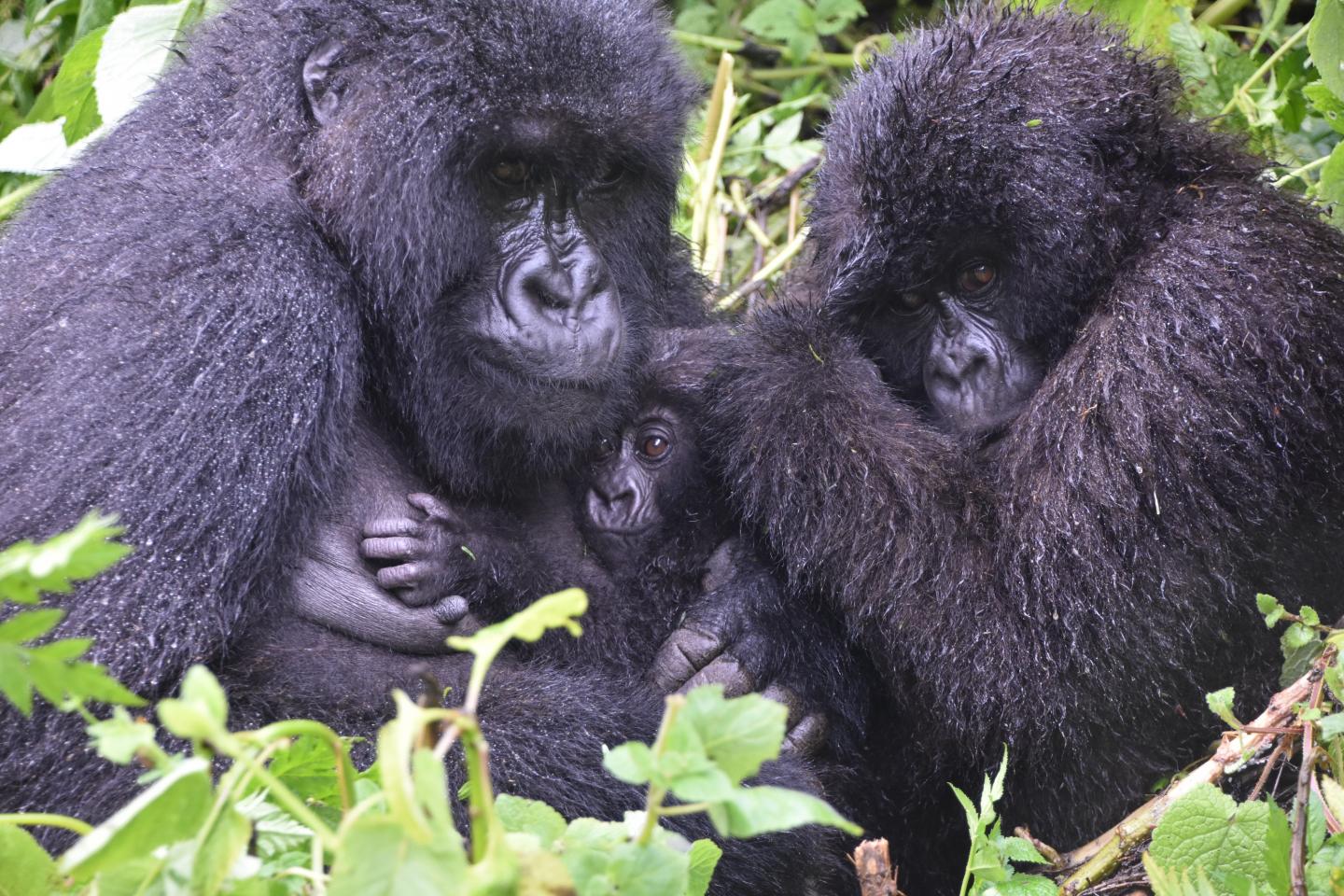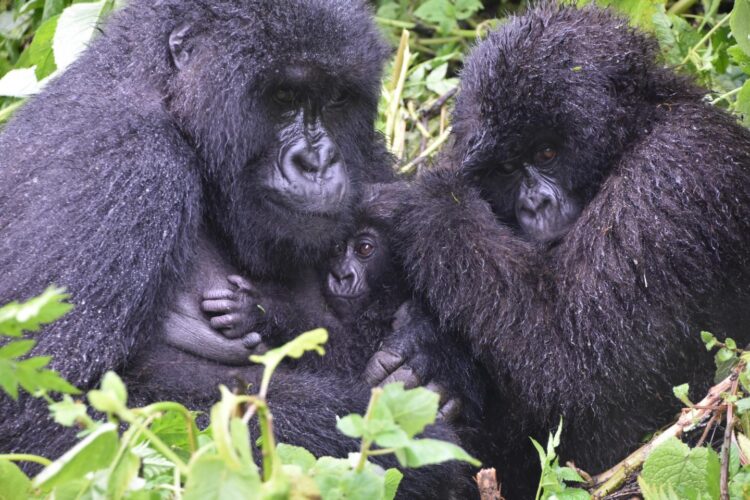As gorilla population increases, so may their risk of infectious diseases

Credit: Gorilla Doctors
A study published today in Scientific Reports suggests that new health challenges may be emerging as a result of conservationists’ success in pulling mountain gorillas back from the brink of extinction.
The study, the first species-wide survey of parasite infections across the entire range of the mountain gorilla, was conducted by an international science team led by the Institute of Vertebrate Biology, Czech Academy of Sciences; University of Veterinary Sciences Brno, Czech Republic; Gorilla Doctors; and the Dian Fossey Gorilla Fund. The work was conducted in collaboration with the protected area authorities of Rwanda, Uganda and the Democratic Republic of Congo (the Rwanda Development Board, the Uganda Wildlife Authority and l’Institut Congolais pour la Conservation de la Nature, respectively).
All mountain gorillas live in fully protected national parks in Rwanda, Uganda and DR Congo, where the potential for spatial expansion is extremely limited due to dense human communities living nearby. Consequently, as gorilla population densities within the protected areas increase, their susceptibility to infectious diseases may also.
The Virunga mountain gorilla population has not increased uniformly across its habitat, possibly due to varying ecological conditions that are linked to different vegetation types. Additionally, in areas of the Virunga Massif where some of the highest growth rates occurred, the mountain gorillas experienced major changes in their social structure, leading to a threefold increase in group densities.
Clinical gastrointestinal diseases linked to helminths, a type of parasitic worm, have been recorded in mountain gorilla populations in both the Virunga Massif and the Bwindi Impenetrable Forest, and may pose a threat to these endangered animals.
“Gastrointestinal disease from helminths is typically asymptomatic in wild non-human primates,” said first author Dr. Klara Petrzelkova, senior researcher at the Czech Academy of Sciences. “But host and extrinsic factors can alter helminth transmission and host susceptibility. This study has put a spotlight on these factors.”
The study elucidates the drivers and patterns of helminth infections and provides a comprehensive foundation for future assessments of the impact of these parasites on gorilla population dynamics. Strongylid and tapeworm infections were quantified in fecal samples collected from night nests and from individually identified gorillas living in five social groups using fecal egg counts.
“Detecting significant differences in parasite burdens among gorilla family groups is critical information for guiding our decisions in providing life-saving veterinary care for this endangered species,” said Julius Nziza, head veterinarian in Rwanda for Gorilla Doctors, which is a collaboration of the Mountain Gorilla Veterinary Project and the University of California, Davis’ Karen C. Drayer Wildlife Health Center.
Striking geographic differences in strongylid infections were detected, with higher egg counts measured mostly in gorillas living in areas where there has been a higher occurrence of gastrointestinal disease in gorillas. Differences in population growth rates across the Virunga Massif subpopulations and the Bwindi population, differences in the social structure of groups, especially in the Virungas, and differences in habitat characteristics (for example, vegetation types at altitudinal gradients) across the distribution range of mountain gorillas may explain observed differences in strongylid infections.
“The knowledge we acquired from this study will help develop future plans for protecting these endangered primates and their critical habitat” said Felix Ndagijimana of the Dian Fossey Gorilla Fund.
This highly collaborative study points to new challenges emerging as possible “side effects” of the remarkable conservation success of the past few decades. Unraveling the patterns of parasite infections in both gorilla populations, evaluating host exposure to infective parasite stages, and studying susceptibility to infection and its consequences on host health will be an important next step for the continued success and survival of this and other endangered animal species with small, isolated populations.
###
Media Contact
Amy Bond
[email protected]
Original Source
https:/





